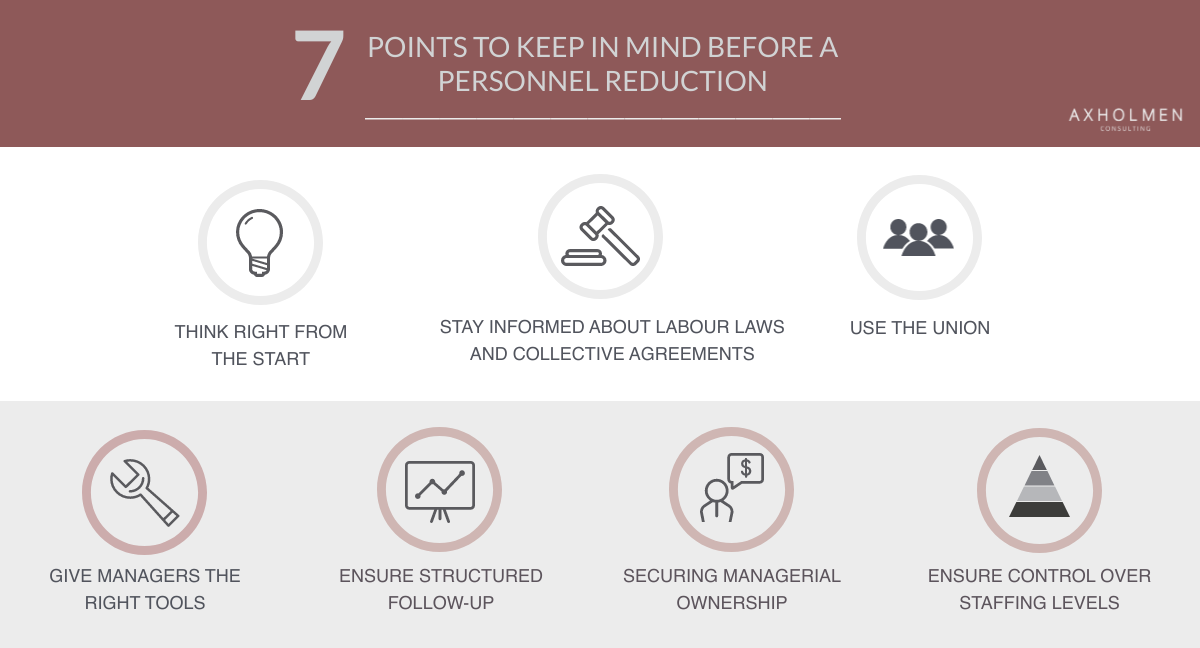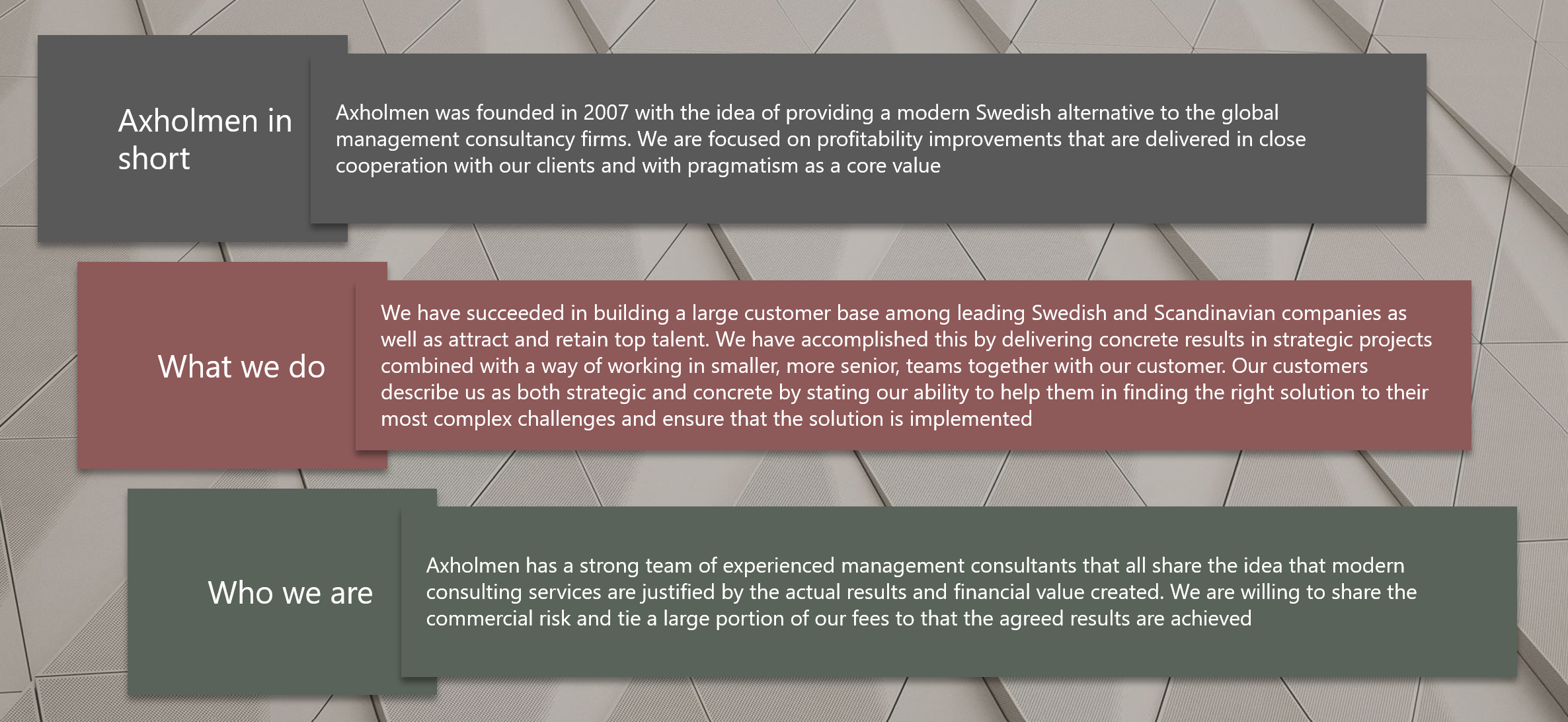1. THINK RIGHT FROM THE START
A continuous reduction of personnel based on the “cheese slicer” principle is a solution that often proves costly, time-consuming and has a negative effect on the long-term development of the company. The most important thing to remember when planning a reduction is to have a clear long-term vision and a plan for how to achieve it. What challenges do we face? How critical is the situation? What is our goal for the organisation? What will the organisation and its activities look like in the future? What skills and roles will be needed? Should we close any department? What should we stop doing if we cut staff, or how can we increase productivity?
2. STAY INFORMED ABOUT LABOUR LAWS AND COLLECTIVE AGREEMENTS
There are clear rules in the LAS (employment protection act), MBL (employment act) and AML (work environment law) that must be followed when terminating employees. It is important to understand from the outset which steps are mandatory, what collective agreements look like and how long the process will take. For example, be aware that the employee side has the right to bring in a payroll consultant, which means that the process will come to a halt. The necessary expertise is in most cases available in the HR department, and they should be involved at an early stage to be able to act proactively.

3. USE THE UNION
See labour unions as a source of support in a challenging situation. Explain the background, challenges and objectives during initial consultation. Providing continuous and proactive information lays a good foundation for a constructive process.
4. GIVE MANAGERS THE RIGHT TOOLS
The first thing an operational manager needs to be able to plan and implement a downsizing is the background and vision of the organisation, i.e. be clear in communicating the outcome of advice number 1. In addition, managers need help with e.g. standardised buy-out packages, synchronisation between different parts of the company and support on how to use existing role descriptions and evaluations in redeployments.
5. ENSURE STRUCTURED FOLLOW-UP
Use an elaborate but simple structure for the follow-up of all defined activities. Ensure information on the responsible manager, the expected impact, the timeframe and the necessary conditions and possible negative consequences. Risk and impact assessment is a requirement under the AML, but above all, careful monitoring and continuous management reporting ensures that the necessary priority is maintained.
6. SECURING MANAGERIAL OWNERSHIP
Responsible managers should not only be monitored, but must truly own activities and results. This is most easily done by linking reduction targets and activity to the budgeting or forecasting process.
7. ENSURE CONTROL OVER STAFFING LEVELS
In combination with the detailed activity monitoring, a permanent monitoring of staff should be introduced in the organisation (if it does not already exist). This monitoring should include all forms of employment, temporary staff and consultants. Otherwise, there is a high risk that the reduction achieved by an activity will reappear in the near future, e.g. in the form of a consultant.










